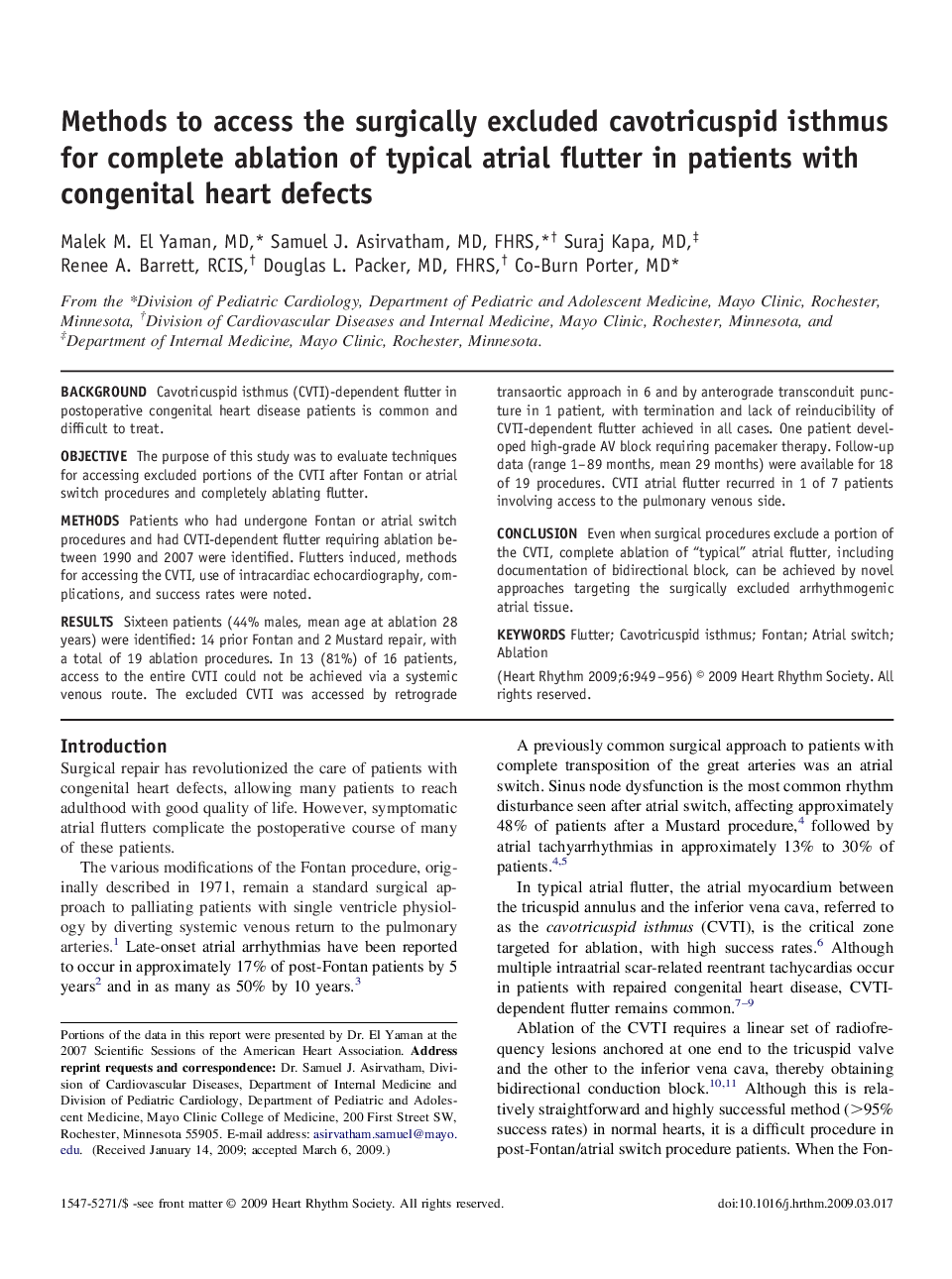| کد مقاله | کد نشریه | سال انتشار | مقاله انگلیسی | نسخه تمام متن |
|---|---|---|---|---|
| 2924164 | 1175897 | 2009 | 8 صفحه PDF | دانلود رایگان |

BackgroundCavotricuspid isthmus (CVTI)-dependent flutter in postoperative congenital heart disease patients is common and difficult to treat.ObjectiveThe purpose of this study was to evaluate techniques for accessing excluded portions of the CVTI after Fontan or atrial switch procedures and completely ablating flutter.MethodsPatients who had undergone Fontan or atrial switch procedures and had CVTI-dependent flutter requiring ablation between 1990 and 2007 were identified. Flutters induced, methods for accessing the CVTI, use of intracardiac echocardiography, complications, and success rates were noted.ResultsSixteen patients (44% males, mean age at ablation 28 years) were identified: 14 prior Fontan and 2 Mustard repair, with a total of 19 ablation procedures. In 13 (81%) of 16 patients, access to the entire CVTI could not be achieved via a systemic venous route. The excluded CVTI was accessed by retrograde transaortic approach in 6 and by anterograde transconduit puncture in 1 patient, with termination and lack of reinducibility of CVTI-dependent flutter achieved in all cases. One patient developed high-grade AV block requiring pacemaker therapy. Follow-up data (range 1–89 months, mean 29 months) were available for 18 of 19 procedures. CVTI atrial flutter recurred in 1 of 7 patients involving access to the pulmonary venous side.ConclusionEven when surgical procedures exclude a portion of the CVTI, complete ablation of “typical” atrial flutter, including documentation of bidirectional block, can be achieved by novel approaches targeting the surgically excluded arrhythmogenic atrial tissue.
Journal: Heart Rhythm - Volume 6, Issue 7, July 2009, Pages 949–956